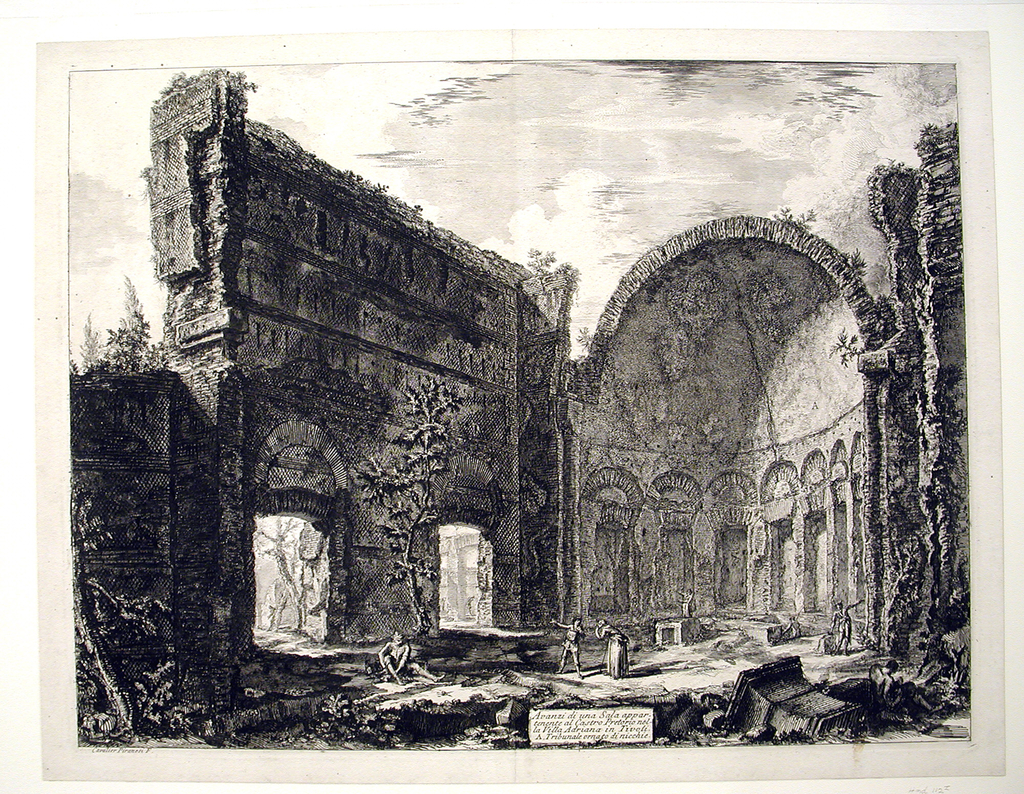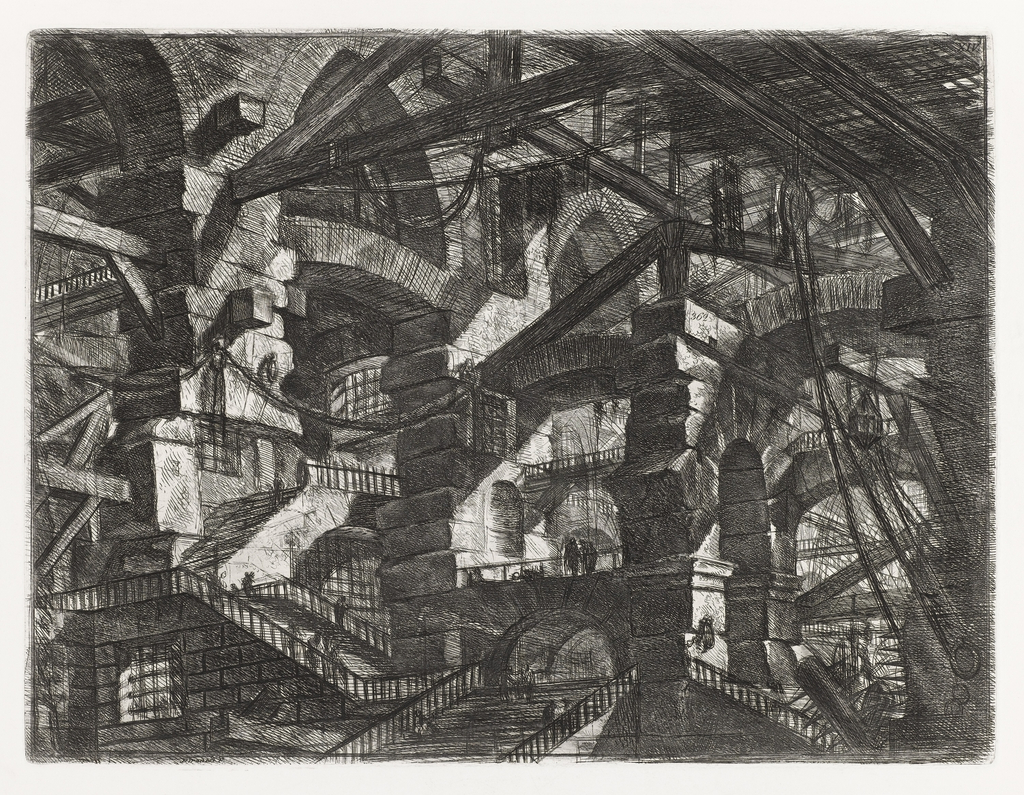In 1767 the French writer and critic, Denis Diderot expounded the ”poetics of ruins” writing, “a palace must be in ruins to evoke any interest.”[1] Diderot’s comments were directed toward paintings by the French artist Hubert Robert that often featured real and fantastical Italianate ruins. Such vogue for ruin paintings were inspired by sites frequented...
Prison design has been a topic of debate and a site for innovation, even in the eighteenth century. This etching is Plate 14 from a series of imaginary prison interiors designed by the Roman architect, designer, and print maker, Giovanni Battista Piranesi (1720- 1778). This print is both an exploration of the limits of the...
Some of the most significant architects of our era have cited designer and architect Giovanni Battista Piranesi’s influence on their work. Learn how architects Peter Eisenman, Founder and Principal, Eisenman Architects; Michael Graves, Founder and Principal, Michael Graves & Associates; and Robert Venturi, Principal of Venturi, Scott Brown and Associates are inspired by Piranesi’s eclectic...
Giovanni Battista Piranesi, an eighteenth-century designer of architecture, elaborate Interiors and exquisite furnishings, boldly combined historical elements to create innovative designs that still resonate today. Cooper-Hewitt invites a panel of designers to discuss how, like Piranesi, their imaginative and often irreverent use of historical motifs invigorates contemporary design. This panel features: Anna Sui, Fashion Designer;...
The third of the grand challenges posed by Secretary Wayne Clough for the new strategic plan of the Smithsonian is explained by the sentence: “As a steward and ambassador of cultural connections, with a presence in some 100 countries and expertise and collections that encompass the globe, we will build bridges of mutual respect, and...
Piranesi’s originality lay in his eclecticism. Pulling together influences from Egyptian, Etruscan, Ancient Roman, and Greek designs, Piranesi presented a hybrid design system that was rooted in his commitment to the stature and importance of the Roman design heritage. From this starting point, the architectural elements move from historical recreations to articulated fantasy. While his...




